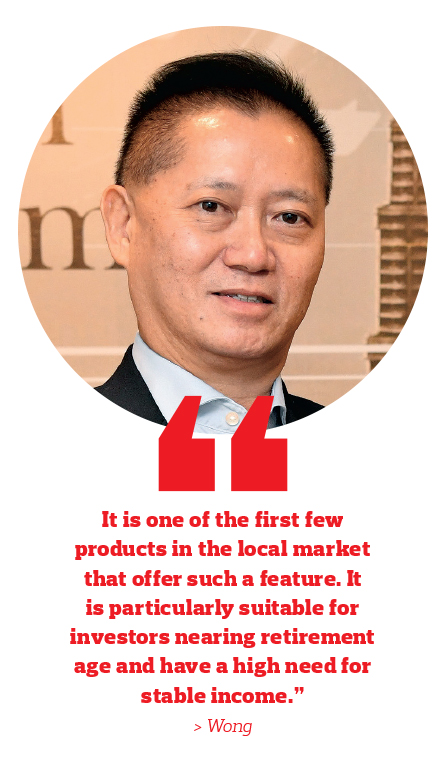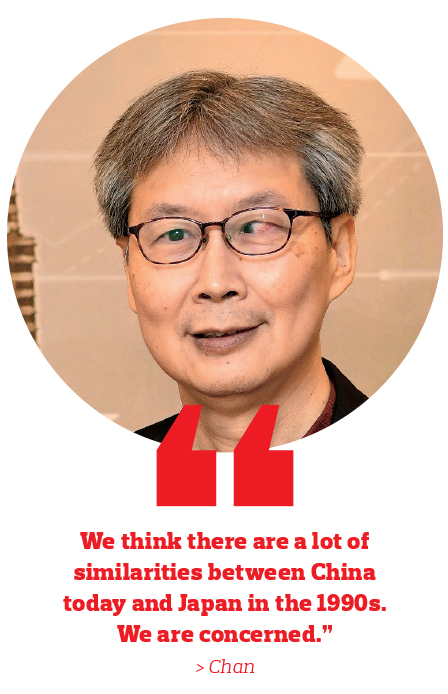
This article first appeared in Wealth, The Edge Malaysia Weekly on October 23, 2023 - October 29, 2023
Of the 40 funds launched in the first half of this year, the TA Total Return Income Fund (TATRIF) was the most subscribed for, partly due to its unique feature that caters to the specific needs of retirees, says TA Investment Management Bhd CEO Wong Mien.
The fund garnered RM152.66 million from local investors in 1H2023. Wong attributes the success to the unique design of the product and the credibility of its external fund manager, Fullerton Fund Management Co Ltd.
Wong says TATRIF has three classes — A, B and C. The class C fund has the unique feature of paying investors a fixed 5% rate per annum, which translates into about 0.41% per month. The fund managers have the discretion to declare a higher distribution rate each year, depending on the performance of the fund.
“It is one of the first few products in the local market that offer such a feature. It is particularly suitable for investors nearing retirement age and have a high need for stable income,” he says.
However, it is worth noting that the 5% payout each year can be distributed from the fund’s income or capital. In the case of the latter, it means investors only get back part of the money they invested in the fund, instead of receiving returns derived from capital gains or dividends.
Wong says the fund will prioritise distribution derived from dividends or capital gains, instead of paying out of capital.
Vincent Chan, TATRIF fund manager and Fullerton’s deputy chief investment officer, concurs with Wong. He says that to generate a 5% return over the long term is achievable.
“The 5% fixed payout is not a magic number. It is based on what we estimate [professional] investors like us can generate over a market cycle,” he adds.
“If we look at the historical performance of an investment portfolio consisting of 60% equity and 40% fixed income, it can generate a return above 5%. That’s why we are reasonably comfortable with that rate.”
Chan points out that a similar fund he is managing in Singapore did pay out 5% to investors in 2022, a rare year when equity and bond prices fell into the red, causing many funds around the world to suffer losses. The fund he managed took a hit, but its performance has recovered.
“The year 2022 was a very difficult one. I’m certain we paid a five-percenter last year and the fund [in Singapore] may have temporarily dipped below its par value. But again, the market has been recovering and therefore we should see it [the fund’s net asset value or NAV] returning to above par,” says Chan.
Meanwhile, investors who prefer to be paid out of only dividends and capital gains can opt for class A and B of TATRIF.
The class A fund does not distribute income and reinvests its earnings for better returns over the long term, while the class B fund declares an income distribution only incidentally based on the fund managers’ absolute discretion. They do not distribute income from capital gains.
“The class A fund is for young savers who just started their career [and have plenty of time ahead for their investment to do well]. The class B fund is for those who are middle aged with a family who may need some regular income. Then finally, the class C fund is for investors nearing retirement age who need stable income,” says Wong.
“We engaged the marketplace and came out with a product with three features. I think this is something that resonates very well with investors. And that’s why it is popular.”
There is a minimum initial investment amount of RM1,000 (or in other currencies) and a sales charge of up to 5.5% for TATRIF. The annual management fee is 1.5% per annum. The fund is available in several currency classes, including the US, Australian and Singapore dollars.
Flexible mandate to limit downside
Another selling point of TATRIF is its flexible investment mandate that allows its fund managers to protect the downside and enhance returns.
“Flexibility is important. So, if we encounter another episode like in 2022 [when both equity and bond prices fell], we can better protect ourselves,” says Chan.
TATRIF fund managers have various options when it comes to mitigating losses if there is a repeat of the 2022 market events. For one, they can raise cash by reducing the equity exposure to 0% from up to 80%. The fund managers may also invest in gold to hedge against a recession or rely on financial derivatives, such as put options, to reduce losses.
A put option is a contract that gives the buyer the right, but not the obligation, to sell an underlying security at a predetermined price within a given period. “It is like buying insurance to protect the value of the portfolio. We use this sort of downside protection strategy, in addition to the ability to raise cash,” he says.
The fund is designed in such a way due to lessons learnt in 2022, says Chan. “When we launched this fund in 2022 [Fullerton’s fund that is similar to TATRIF in Singapore], we had those considerations in mind and had those features designed.
“We don’t just want to have better flexibility to avoid losses, but also to capture the upside when market exuberance returns. [When designing the fund] we were looking two years ahead into 2024 and 2025.”
As at Aug 29, Chan had allocated close to 80% of TATRIF into equities as he was anticipating a recovery in the stock markets on the back of economic growth. But things are expected to change several months down the road.
He expects central banks to have succeeded in bringing down inflation in 2024 and 2025 and for inflation to remain low in those two years. Long-duration bonds could do well under such an environment.
“We could, at that point in time, reduce our exposure to equities and move into long-duration government bonds to benefit from the next economic regime of falling inflation and falling interest rates. We are allowed to invest up to 100% in bonds. As I illustrated earlier, the flexibility of the fund not only allows us to protect the downside, but also allows us to participate in the upside,” says Chan.
Asked whether a recession in the US is around the corner, he says it is unlikely as its labour market remains robust. He opines that weaker companies could have folded during the pandemic period and the rest continues to survive well despite interest rates rising to above 5% from near zero.
“My suspicion is that a lot of adjustment has already happened between 2020 and 2022. We had two years of lockdowns. Many businesses that cannot function without the internet have folded. But those that can successfully capture market share are those that quickly adapted to the internet [and continue to do well]. So, a lot of the adjustment has already happened,” says Chan.
He is more concerned about China’s economic growth as it is showing signs of entering into a deflationary environment while its property companies are experiencing financial troubles. “We think there are a lot of similarities between China today and Japan in the 1990s. We are concerned,” he says.
He adds that the housing market in the third- and fourth-tier cities in China has fallen more than 30%. The housing market in its first- and second-tier cities is being maintained only because the Chinese government is controlling prices.
“Falling asset prices have already happened in China. Then you talk about the corporate sector, which is dealing with a lot of excess capacity. It is now a very difficult period for the Chinese economy,” says Chan.
He expects China’s economic figures to remain “very soft” this year as the country will need a lot of monetary stimulus to let its economy continue humming. He says that this time around, following the traditional playbook, such as having its central bank cut interest rates, won’t be enough.
“They need to include government spending. But it has not been very ‘tangible’ so far. There are no real sizeable spending packages [being dished out] that can give investors confidence that the government is determined to support the economy,” says Chan.
“In the absence of coordinated monetary and fiscal policy responses, it is likely that China will continue to be weaker and weaker going forward.”
Save by subscribing to us for your print and/or digital copy.
P/S: The Edge is also available on Apple's App Store and Android's Google Play.


